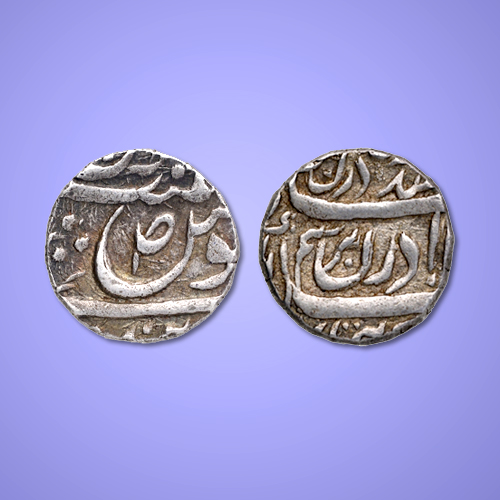Persian Couplet on Jind’s Coin
2022-03-02 Wed
The origin of the Jind dynasty can be traced to the Phulkian family. Their roots had common ancestry of Baryam and were granted the title of Chaudhuri by Emperor Babur in 1526. In 1763, Jind was established by Gajpat Singh who was the grandson of Phul.Jind Princely State was entitled to a 13 gun salute which was administered by native rulers under the indirect control of the Imperial British. The state covered a total area of 1,299 square miles and comprised of a total population of 3, 61,812 as per the census report of 1941. It is comprised of three tehsils, Sangrur, Jind and Dadri. Dadri was the largest tehsil of the state and touched the boundaries of Rajputana and Haryana.
During British Raj, it was a part of the Cis-Sutlej princely state until independence. It was founded by Raja Gajpat Singh in 1763. The rulers belong to the Phulkian dynasty. Earlier, it was ruled by the Schindia dynasty of the Maratha Empire and paid tribute to the Marathas. In Second Anglo Maratha War, Marathas were defeated and so Jind state became a British protectorate.
Gajpat Singh of Jind princely state had issued a silver Rupee. The obverse of the silver rupee states qadir- bechun couplet. The reverse of the coin depicts Sana julus Zarb Sahrind off flan.
Image Courtesy: Mintage World
Latest News
-
Ghiyath Shah as Heir Apparent
2025-09-25 ThuGhiyath Shah was the ruler of the Malwa Sultanate, reigning from 1456 to 1500. From 1456 to 1469, he...
-
Malwa Sultan Mahmud Shah Silver Coins
2025-09-11 ThuMalwa Sultan Mahmud Shah minted silver coins in round and square flans. <br><br> For round coins,...
-
Malwa Sultan Mahmud Shah Billon coin
2025-08-26 TueMalwa Sultan Mahmud Shah's billon coins followed three weight standards: 100 rati, 96 rati, and 80 r...
-
Fascinating Archaeological Facts on Postage Stamps - 91
2025-08-23 SatRhinoceros is one of the oldest land mammal species existing in India. There are five species of rhi...
-
Fascinating Archaeological Facts on Postage Stamps - 90
2025-08-23 SatUthiramerur, a Village in Kanchipuram, Tamil Nadu, is notable for its Temple inscriptions that descr...

